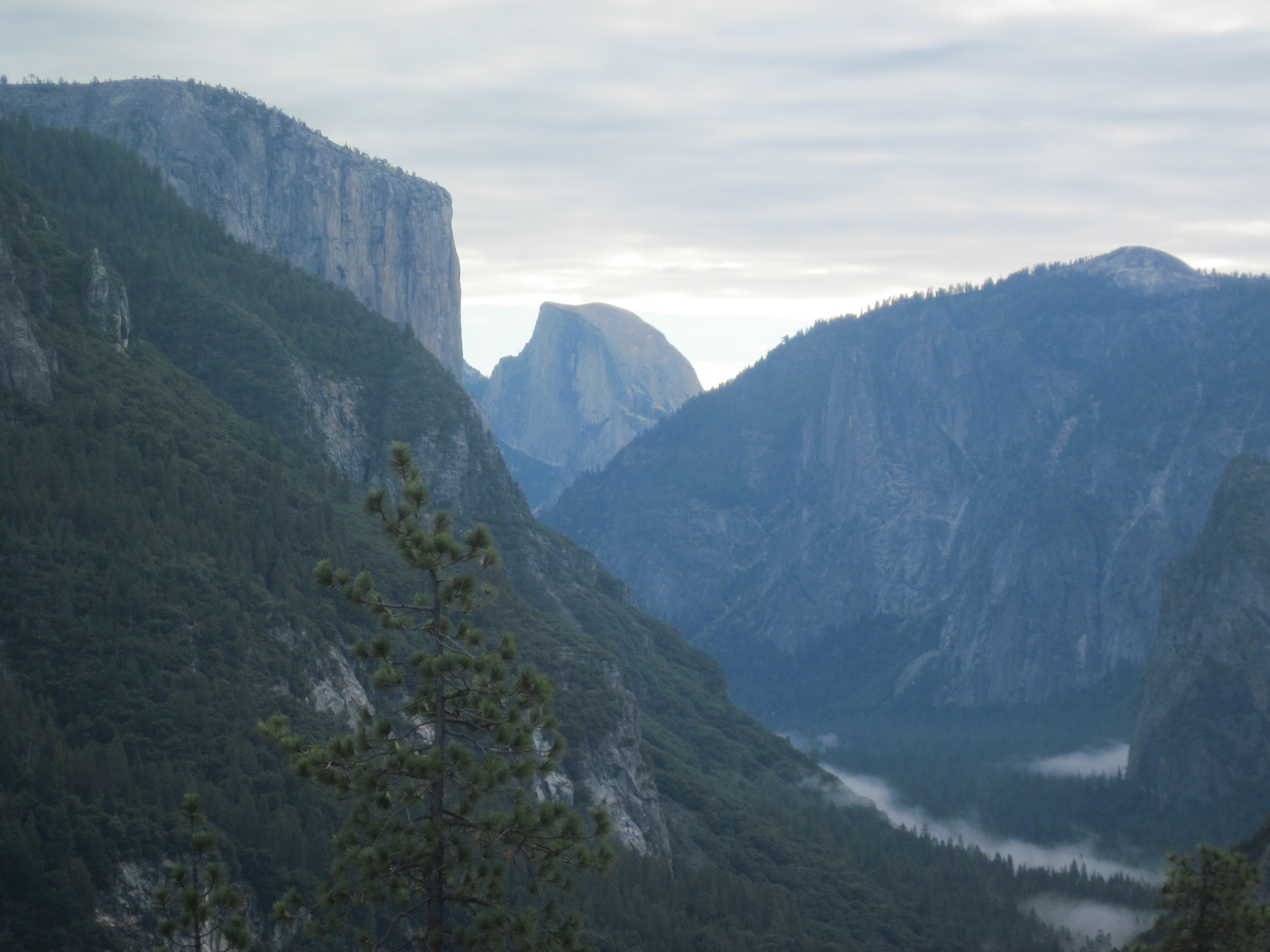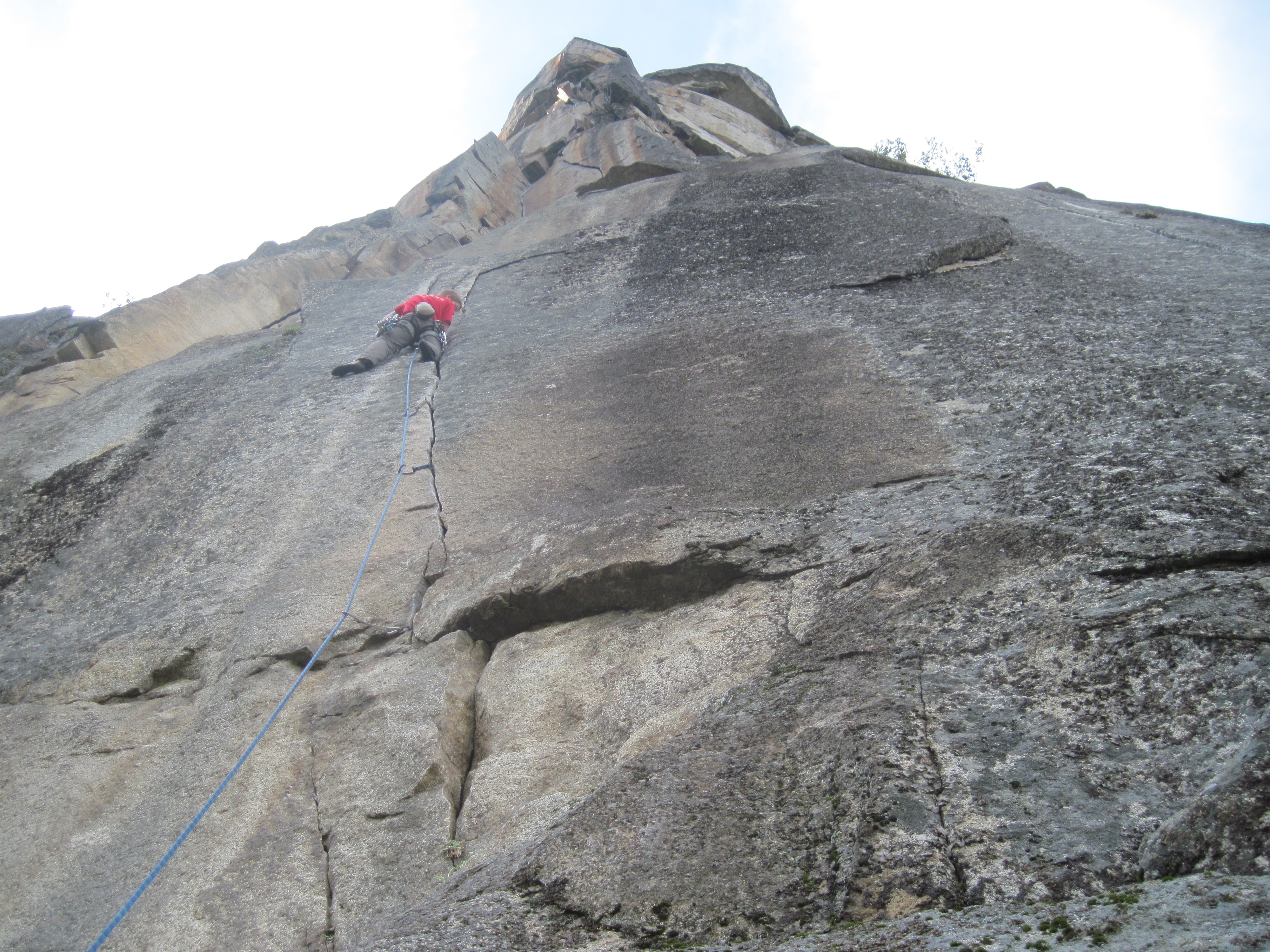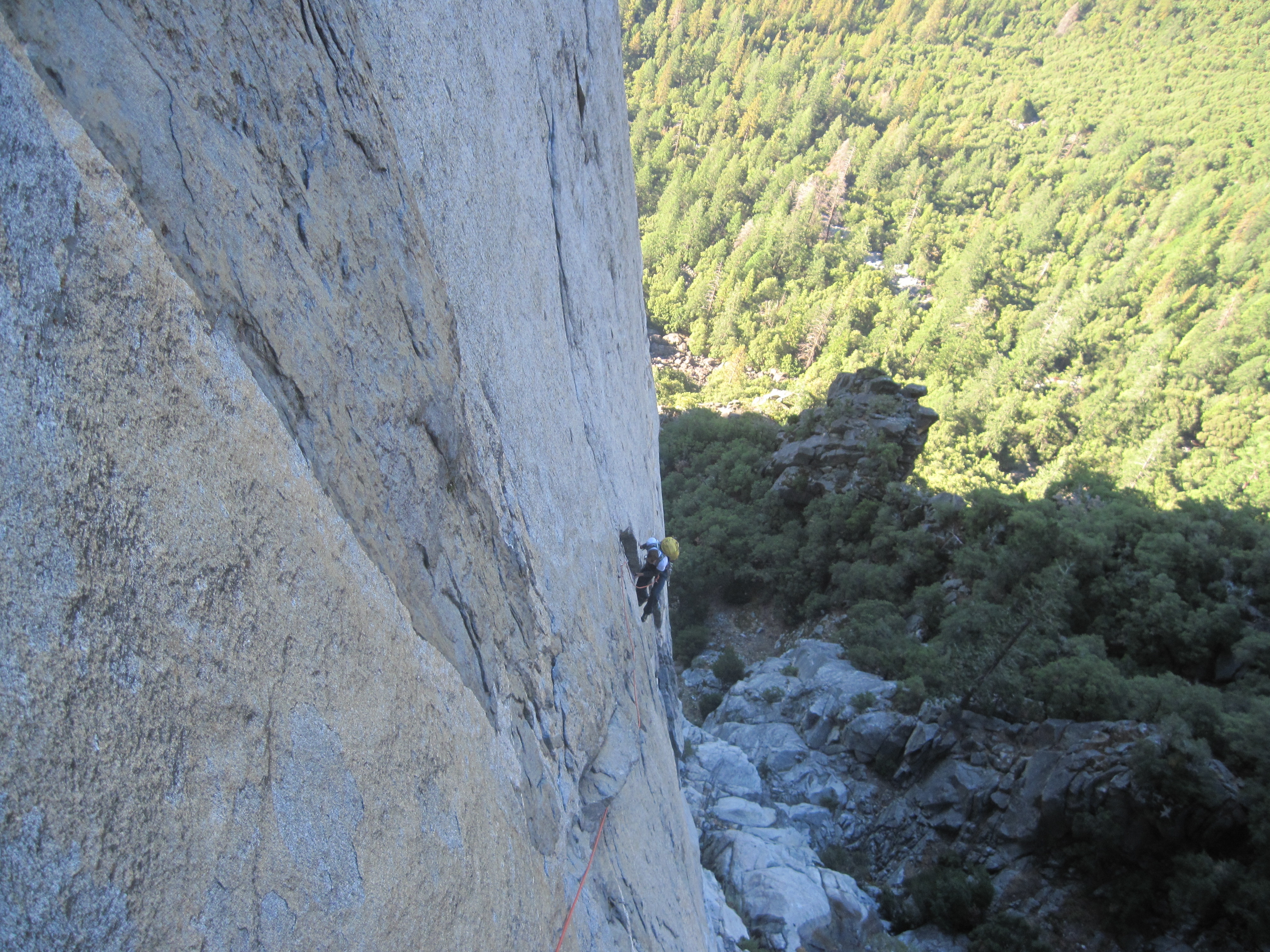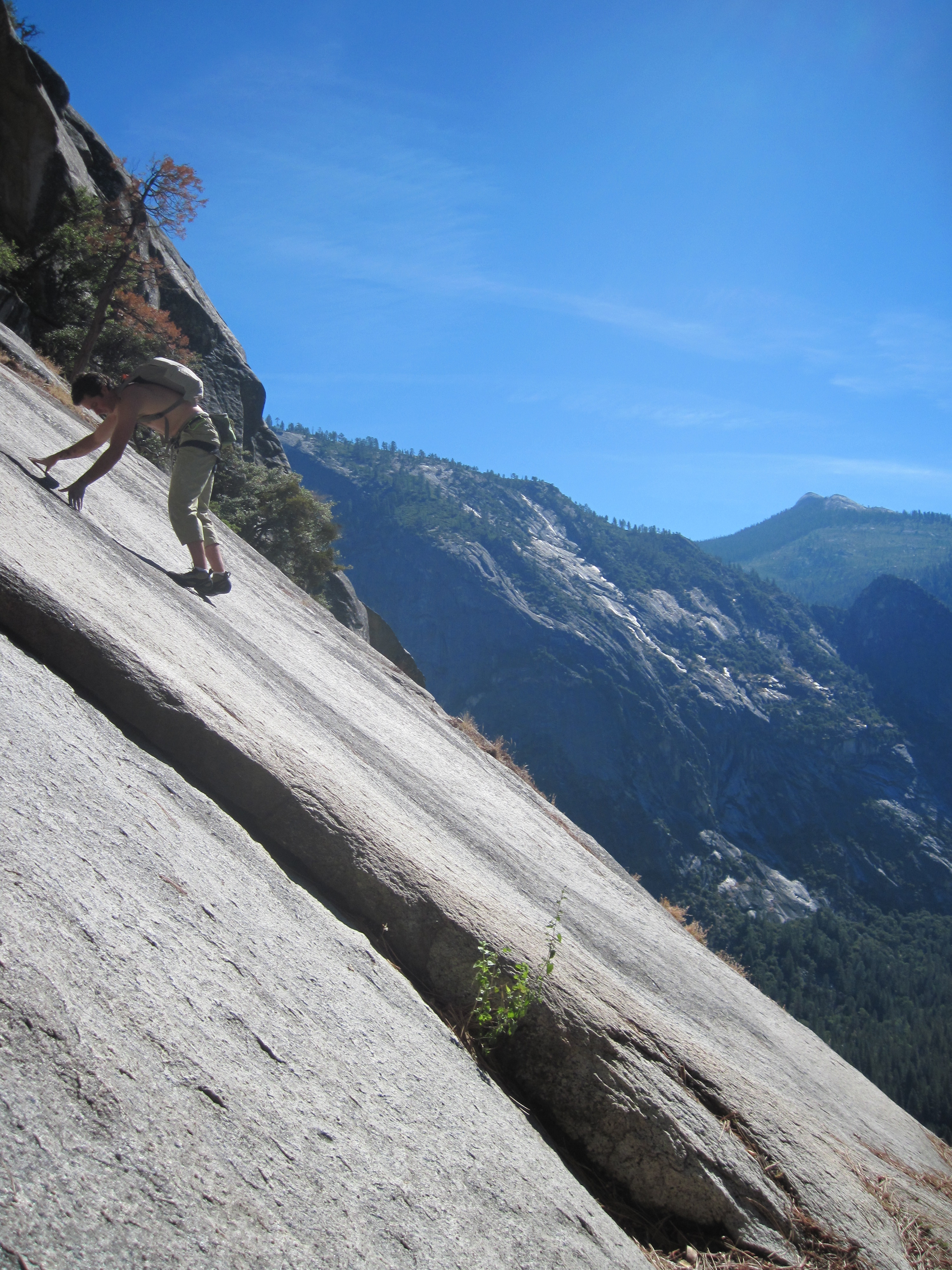The American Alpine Club held their International Climbers’ Meet in the majestic Yosemite National Park from 4th to 10th October 2010. Eszter Horvath and Callum Muskett went as BMC representatives.
Eszter Horvath's report
Yosemite has long been on my list of “100 things to do before I die”. After all, this place is an essential tick for every climber whose main concept of climbing is getting their hands mauled to the raw by heinous cracks. What I did not realize before I eventually got there (after spending decades being broke) is that this place is not easy to cross off the list once and for all; it has a special atmosphere that captures you and like an addict, you will want more and never return to normality again.
I was one of the lucky “two”, along with Callum Muskett, to represent the UK in the 2010 AAC Yosemite International Climbers' Meet by courtesy of the BMC.
As this was my first time in the United States, I was surprised on arrival to discover the friendliness and openness of people. Being approached by a bus driver or taxi driver to have a chat about life was very different from the America I imagined (where you are likely to get shot, mugged or raped).
After a tedious journey on public transport, arriving in the Valley in monsoon weather filled me with disappointment (but also secured an excellent spot in Camp 4 without any queuing at all). After a couple of days spent trekking to admire the outstanding views and lying in my super-small tent listening to the deafening noise of thunder echoing between the granite walls I could take my place in the Yellow Pine Campground for the International Meet.
Thanks to the hard work and enthusiasm of the ICM organizers and host climbers the event was a very enjoyable assembly of people from all over the world, who turned out to be not only very competent climbing partners but could also sit around the fire & poke fun at each others’ accents. Guided by the locals I discovered that the Valley offers everything a climber of my sort might want in Nirvana: routes packed with the most amazing features, brilliant bouldering, scary runouts, and if you think that is all too easy, you can try the slackline...
During my stay I managed to climb numerous routes of outstanding quality including my favourite, the Rostrum (according to an unknown, modest American climber “simply the best route in the world!”). Being an off-width addict I was able to get every joint on every limb grazed and bruised. I also acquired a nice rash caused by absent-mindedly walking into a Poison Oak which made me take an unplanned (and long overdue) shower.
The week went by far too quickly and by the end I had serious trouble suppressing the urge to quit my job, ignore my recently gained British Citizenship and move to America.
I would like to thank the BMC for the opportunity to attend the American Alpine Club International Climbers' Meet and for their financial support & the AAC members for their hard work that made this great event happen. Thanks also to Callum Muskett for his detailed account of the meet, echoing my own experiences.
Callum Muskett's report
Worn out after hours of travel, I finally reached the Yosemite Valley. Looking out of the bus window I could just make out the striking silhouette of El Capitan against the gloomy night sky, lit by a network of head torches, like a half-empty skyscraper. The bus swung left over a bridge and between the trees, the cartoon perfect outline of Half Dome came into view. The bus came to a sudden stop outside the Yosemite Lodge and I stumbled off following a procession of climbers on their way to the famous camping grounds of Camp 4. As I walked through the lively campsite, I passed the impressive Midnight Lightning block, rising up majestically opposite the grimy Camp 4 toilets. At the far end of the campground was a ghetto of British climbers that you’d be as likely to find along the streets of Llanberis, as in a campground over 5000 miles away.
_ _ _

Yosemite is a place I have always wanted to visit. It’s a place, like the Alps and the Himalayas that carried a mystique about it. When I first started climbing, I would look at the famous routes and the inspirational pictures of these areas and the aura would grow. I visited the Alps last summer and was amazed at the vastness of the range, it wasn’t quiet and untouched like the mountains in the North-West of Scotland but it was impressive, gigantic and daunting. Yosemite was similar in that it wasn’t as quiet as you might find Gogarth or Cloggy but it was huge as well as stunning and phenomenal. I was fortunate enough to get a place on the American Alpine Club’s International Meet by applying through the BMC. I was the youngest ever attendee and this gave me a good excuse to skive school for a couple of weeks!
_ _ _
I had little sleep that first night and I was up early the following morning, queuing for a prized spot in the over-busy Camp 4. That first morning, I teamed up with Rob and Alex, two strong Llanberis based climbers, and a Brit called Ian, for a trip to the Cookie Cliff down the valley. My first route in the Valley was the classic Fawcett and Livesey test piece Crack-a-Go-Go, an enjoyable and technical twin crack line. We enjoyed a few more routes before we heard the deep rumble of thunder higher up the valley and soon enough the scorching sunny skies turned black and the rain came thundering down. The ferocity of the thunderstorm created minor landslides and more worryingly large waterfalls formed on some routes on El Capitan that still had people climbing on them!
The rain continued relentlessly for four days before abating a little, by which time the previously over-full Camp 4 had turned into an almost barren camping area, with the few remaining climbers left soggy and depressed. On the fourth day of the monsoon I moved my wet tent and damp belongings across the valley to the Yellow Pines campground where the International meet was to be held. I was greeted by Dave Turner, the event coordinator, boasting an impressive limp after a recent 50-foot whipper onto a ledge on Half Dome during a speed ascent. He informed me that the plan for the following day was a trip to the perma-dry steepness of Jailhouse Crag outside the valley.

The international and host climbers turned up in dribs and drabs that night and by the following morning two mini-buses were assembled to take us to the crag. The further we drove from the valley, the more the weather improved and we were soon in t-shirts walking up to the impressive basalt overhangs of Jailhouse Crag. This crag is steep! To give you an idea of just how steep there are only two lines that top out on the main section of the crag, both harder than F8c and I was also told that I would never fall off such big holds on any crag other than this. I warmed up on some easier routes over on the right side of the crag, before red-pointing a classic 5.12b called Whipping Boy. After five routes, my arms were toasted and the sun hit the crag making it a very hot place indeed. The crag was clearly a popular venue for top climbers escaping the rain in the valley, Martina Cufar, Hazel Findlay and Tommy Caldwell were there pulling hard. Instead of a shower that night, a few climbers, myself included, decided that jumping off a bridge into a reservoir would be a good idea before heading back to the sodden valley. A nice way to cool down after a hot day!
That night we all had a good chat around the camp fire getting to know each other and telling jokes as we ate the good food provided by the AAC. The following day was spent doing a bit of trail restoration work to improve access to a local crag and we climbed a few decent single pitch routes before the heavens opened and we all returned to the damp campsite and a quick visit to the steep overhangs of the fantastic Camp 4 boulders.
The next day, I’d planned to climb the Yosemite classic The Rostrum with top American alpinist Colin Haley. Colin was a good partner for the route, his enthusiasm matched my own, he was a good laugh and it was amazing talking to him about alpine climbing, his solo’s of Supercanaleta on Fitzroy and Super Couloir on Mont Blanc du Tacul are truly awe-inspiring. On the flight over to America, I watched the sensational footage of Dean Potter ‘base-soloing’ The Rostrum in First Ascent, one of the documentaries available on the plane’s TV’s. The footage had inspired me even more than the recommendations I’d had back home and I was desperate to climb the route. We made a fairly early start, driving up to the top of the route for nine in the morning. We were disappointed to see how damp all the rock was and as we walked down to the base of the route through the trees, we began to think that we may not be able to climb the route. We traversed in on the ledge above pitch three to check the conditions and prevent a huge walk out if we’d committed to abseiling in to the base of the route. Surprisingly, the conditions seemed to be good and the route soon dried as we enjoyed the fantastic and varied crack climbing.
The crux of the climb is the fourth pitch which was my lead and goes at a 5.11c finger crack. There were a few tenuous and strenuous moves before better holds are reached and then an easy lay-back corner brings you to a comfy ledge. The crux for most British climbers is the off-width on the sixth pitch, only 5.10 but a dire struggle! This pitch was also my lead and I’d only ever climbed one off-width before. Thankfully the difficulties were short-lived and a few knee jams and a lot of squirming got me to the easy upper section of the pitch. The last couple of pitches went by in a blur and we were soon standing on the impressive prow that forms the top of The Rostrum. On our way back from the route the rain returned and I spent the evening persuading Tomas ‘the Hungarian machine’ Kovacs to attempt The West Face of El Capitan with me the following day.

The West Face was a route on my tick list from the very beginning. It’s 19 pitches long and free climbs an impressive face on El Cap. It inspires me in the way that the longer aid climbs don’t. It may be smaller and not take as impressive a line as The Nose but I’m not good enough to free-climb The Nose (yet!) and it’s free climbing that inspires me. As usual, I used my optimism and enthusiasm to try and lull Tomas into thinking the climbing would be easy: “We’ll be finished by five”, “We’ll be back for tea” etc. Tomas eventually gave in to my pleas and we planned to head to the route early the following morning. Tomas is immensely strong and moves well on rock, it was a slight gamble though to climb El Cap with a person who doesn’t know his left and right in English, it made giving directions rather difficult! I’ll be the first person to point out, however that my Hungarian isn’t great; I know how to say potato in Hungarian though!
The smooth start to the day was spoilt when I realized I’d forgotten my food and I went the whole day with only a couple of energy bars and a litre of water. We bush-whacked our way up to the base of El Cap in the darkness after losing the path and then scrambled up to the indistinguishable base of the route. The first two crux pitches were great, they’d be popular in their own right, but were a rude awakening at that time in the morning and I had to rest on the bolt on the first pitch before spotting the correct sequence. We moved quickly up the next few pitches and we were soon past halfway with all the 5.11 pitches out of the way, including a really impressive steep and exposed crack-line. After impatiently reading the topo description, I climbed the wrong crack line and was forced to make a desperate and startling slab traverse of about V4 to get back on route to another easier crack, thus avoiding a pendulum and keeping to free climbing- Tomas was forced to pendulum though, as he had the rucksack weighing him down. Sadly, it was a mere 5.7 pitch, two from the top that forced us to resort to a little aid in the form of a few French free moves. The whole corner was running with water. This only added to the experience of a fantastic climb and we were chuffed to top out on El Cap to a fabulous sunset and a fantastic view across to the mountains of Tuolomne meadows and beyond. The descent down the east ledges was rather epic in the dark, as neither of us knew where the in-situ abseil ropes were, or where the east ledges were and suffice to say we missed tea that night!
The day after, a small group of us headed to the Cookie Cliff for a few routes and then bouldering for as long as our aching feet and fingers could tolerate, before heading back to the party to celebrate the final day of the meet. I heard many great stories at the party, the best of which were from Jim McCarthy who told me of a monster 250 foot fall high up on El Cap in the 1960s and about the secret Nanda Devi expedition during the Cold War. A small prize giving took place during the party and I won the prize for climbing the longest and hardest routes of the meet.

My last day in the Valley was spent soloing The Royal Arches Route with Colin which was tremendous and involved an in-situ rope swing for a jug and a thin hold-less slab to finish which Dean Potter apparently runs across! On the way back down and during the rest of the day, I spotted some cool animals such as an Eagle, snake, raccoons, blue jays and deer. Yosemite pioneer and all round nice guy Jim Donini (still cranking hard during his retirement) gave me a lift back to the airport and I finally rounded off the fantastic trip to Yosemite.
On the return flight, I reflected on a fantastic trip. The weather may not have played ball but I had a fantastic time nevertheless, meeting some great people and getting a taster of the climbing on offer in Yosemite. By the time I got home, I’d already planned a longer trip to Yosemite for next year.
I would like to thank Steve Long for telling me about the trip, the BMC for their funding, the AAC in particular Dave Turner and Carol Kotchek, DMM and Rob Greenwood for lending me his camera.
Chris Weidner's report of the meet - Global change, one climber at a time
« Back